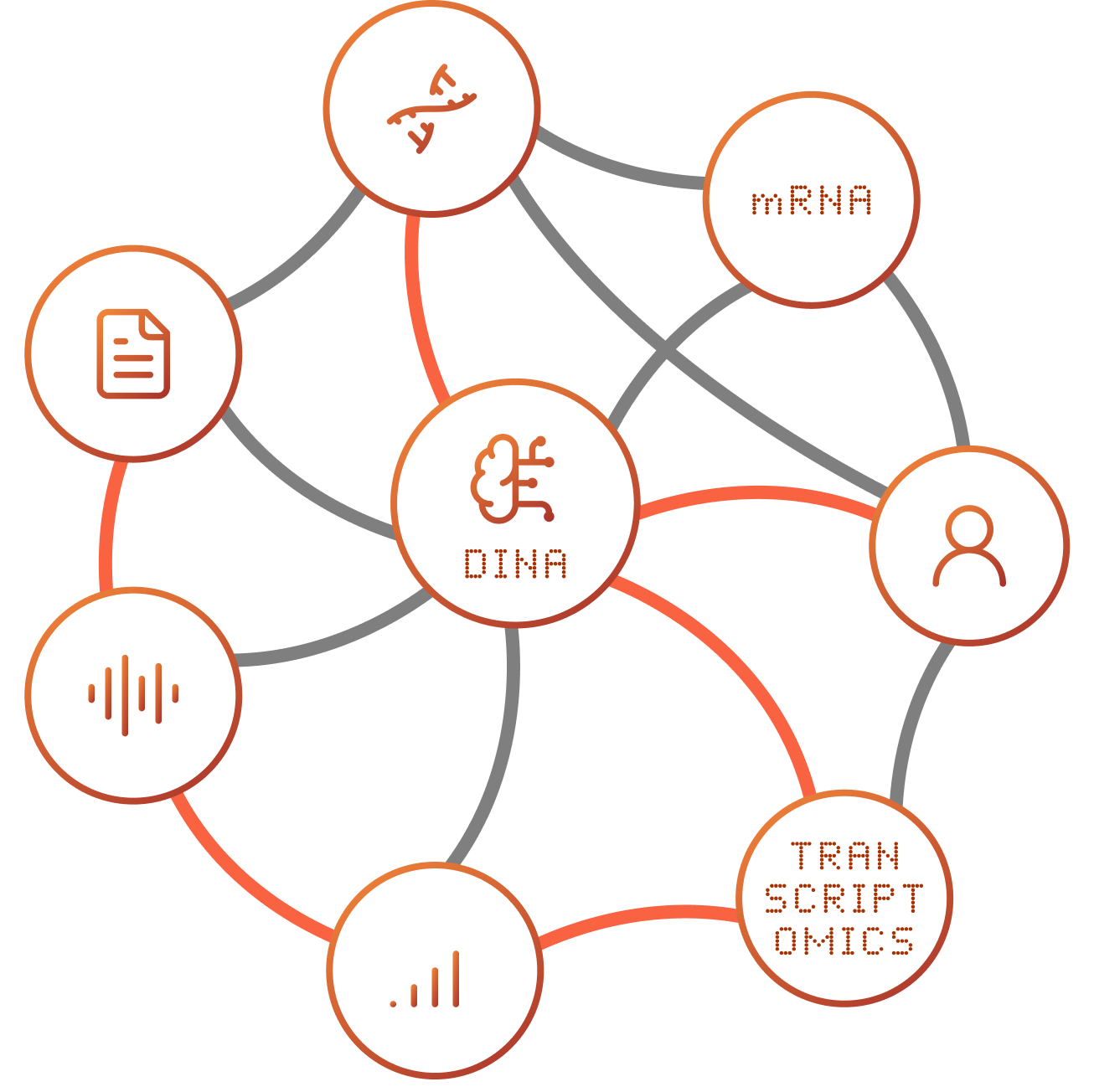DATA
A Global, Ethical, and Ever-Growing Resource
Mavatar uses extensive transcriptomic datasets from global academic and clinical studies, accessible via repositories like GEO*.
DATASETS
Public Transcriptomic Data
Mavatar is powered by rich, fast-growing data sources:
- Publicly available transcriptomic datasets from global studies.
- These datasets are legally accessible via repositories like:
- Gene Expression Omnibus (* GEO), including bulk RNA and single-cell data, with metadata on diseases, tissues, treatments, and patient responses.
A Platform for Clinical Use
How it works:
How it works:
Mavatar DINA platform uses a multi-step process to turn complex biological data into actionable insights for precision medicine.
Step 1

DINA
How We Use It
We apply our proprietary DINA (Deep Integrated Network Analysis) framework to analyse, organise and interpret data at scale.
- DINA maps gene interactions across healthy and disease samples—revealing mechanisms, variations and sub-types.
- Single-cell data adds a personalised layer that shows how those mechanisms behave in individual cells and patients.
- The result is a structured disease model that supports deeper research and treatment development.
Step 2

FUTURE
Why Public Data Matters
We work primarily with public, peer-reviewed datasets because they are:
- Transparent and scientifically validated
- Rich in ethnic and genetic diversity
- Able to track global trends such as pandemics or immunity shifts
- Free of ethically sensitive animal duplication
- Scalable and cost-effective for rapid discovery
Step 3

DATA
Smarter Learning, Broader Impact
Most platforms merely enrich internal datasets with public data—Mavatar learns directly from it across tissues, diseases, patient profiles and outcomes.
That lets us:
That lets us:
- Discover new therapeutic opportunities
- Translate insights from animal models to human biology
- Spot biological patterns others may miss
- Cut cost and risk in early-stage research
01
DINA
How We Use It
We apply our proprietary DINA (Deep Integrated Network Analysis) framework to analyse, organise and interpret data at scale.
- DINA maps gene interactions across healthy and disease samples—revealing mechanisms, variations and sub-types.
- Single-cell data adds a personalised layer that shows how those mechanisms behave in individual cells and patients.
- The result is a structured disease model that supports deeper research and treatment development.

02
FUTURE
Why Public Data Matters
We work primarily with public, peer-reviewed datasets because they are:
- Transparent and scientifically validated
- Rich in ethnic and genetic diversity
- Able to track global trends such as pandemics or immunity shifts
- Free of ethically sensitive animal duplication
- Scalable and cost-effective for rapid discovery

03
DATA
Smarter Learning, Broader Impact
Most platforms merely enrich internal datasets with public data—Mavatar learns directly from it across tissues, diseases, patient profiles and outcomes.
That lets us:
That lets us:
- Discover new therapeutic opportunities
- Translate insights from animal models to human biology
- Spot biological patterns others may miss
- Cut cost and risk in early-stage research

DATA
Mavatar Is Using the Future of Data—Now
Harnessing the power of public transcriptomic data, Mavatar transforms tomorrow’s precision medicine with ethical, scalable, and precision-driven insights, today.